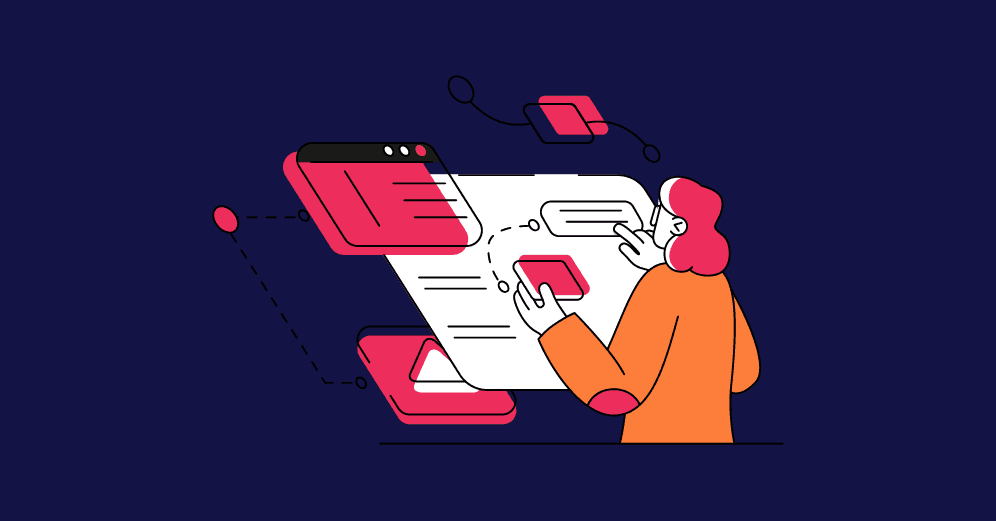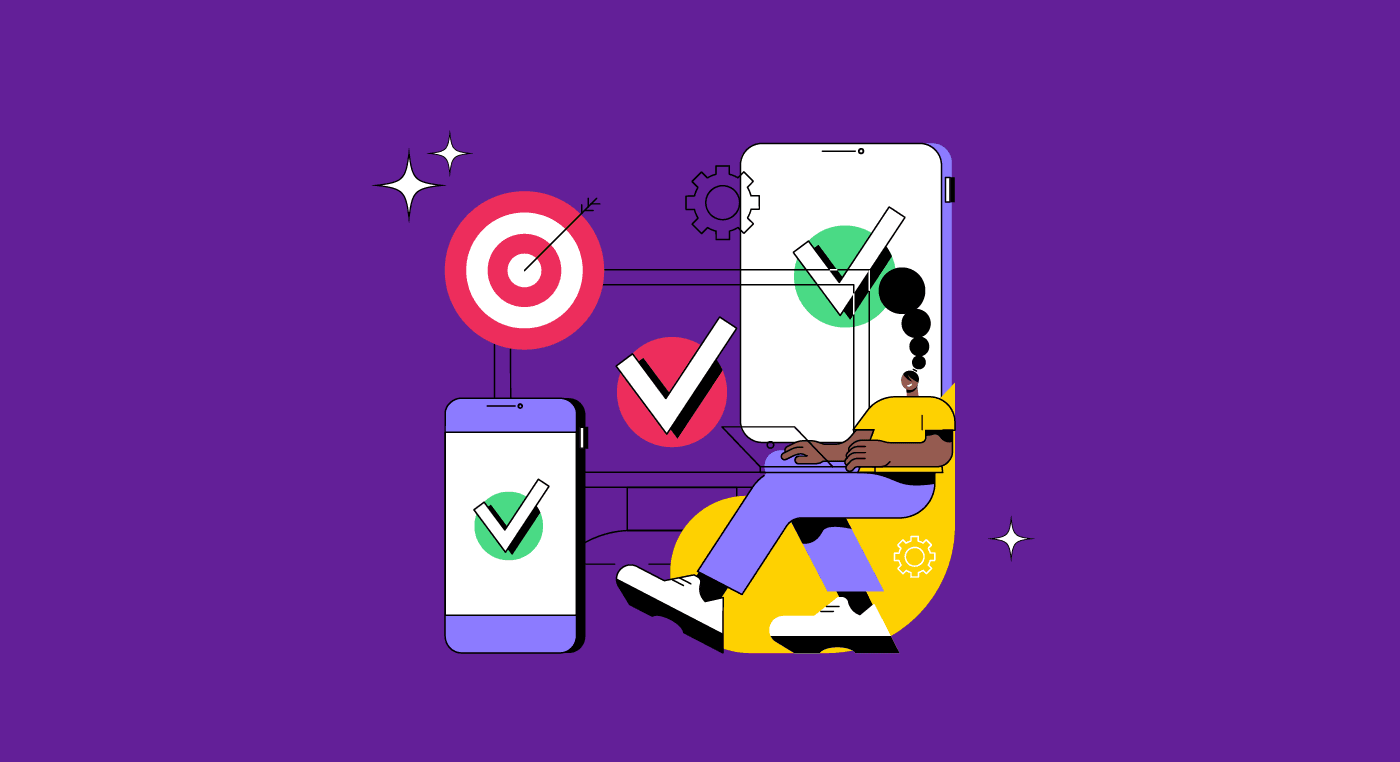It’s increasingly common to see companies bringing products and services closer to their customers with the help of technology and creative process tools, such as User Centered Design. Companies have understood that only in this way will they guarantee a great experience for their users and the success they want for their products and services.
The way we wire money from our phones or order food from our favorite restaurants from mobile apps are examples of this transformation.
This is the result of research and processes to improve customer experience and satisfaction, and User-Centered Design is a fundamental part of this process.
In this article, we share the importance of the 4 fundamental principles of User-Centered Design and give you tips on how to apply them to improve the experience of your UX/UI Design projects! Check it out!
What is User-Centered Design (UCD)?
User-Centered Design, also known as UCD, is a design process that focuses on the user and on solving their needs.
By involving the user throughout the design process – through surveys, tests, and interviews – UCD aims to understand the user's needs to produce intelligent systems that can solve a truly relevant problem, leading to a more satisfying experience with the final design.
Before User-Centered Design, project development focused only on business objectives, functionalities, and available technological capacity.
This way, the most important part of the process was not taken into account: who will actually use the product, the end user.
Therefore, the systems were too complex or focused on not-so-important things, which resulted in failed projects and wasted resources.
With UCD, instead of requiring the user to adapt to learn how to use a product, systems are created according to what the user believes and how they act, see, and interact with the world.
When a company, for example, launches a product or service that makes life easier for its users, it has certainly done all the planning and development using User-Centered Design principles.
Identifying the persona and how they behave before purchasing a product and conducting usability tests are important tools to achieve this result.
Reading Tip: Heart Framework: User-Centric Metrics To Measure User Experience
The Importance of User-Centered Design
UCD is important to:
- Improve users' experience with the company's products and services;
- Add quality to what is produced by looking at user feedback and perception;
- Improve the focus and productivity of the team, avoiding undirected work;
- Increase revenue and reduce costs as a result of the creation of better products and services and less rework;
- Improve the usability of software and its tools, making it possible to generate more value for the company.
The 4 fundamental principles of User-Centered Design
The UCD guiding principles were defined by Don Norman, one of the greatest references in User-Centered Design and Usability today.
Norman is also behind the Nielsen Norman Group (NN/g), one of the world's largest UX/UI Design consultancies.
For Norman, the fundamental principles of application in User-Centered Design are:
- To have the assurance of solving core problems at their root, not just the problem presented;
- Focus on people;
- Work with a systematic perspective, understanding that problems result from multiple parts that depend on each other;
- Test and refine proposals that continuously meet people’s needs.
Below we detail the 4 principles proposed by Norman. In addition, we give tips for you to start putting them into practice.
1) Develop the ability to solve the root of the problem

The real problem is not always the one that was initially presented. It's part of the User-Centered Design concept to investigate the root of the problems and seek efficient solutions.
For Norman, the main difficulty in working in a team is the lack of understanding, by the areas involved in the project, about the problem at hand. This failure in communication can happen for the following reasons:
- Misaligned work environment and no project focus;
- Use of technology that is complicated for the users;
- Lack of interaction between technology systems and the personas;
- Lack of full communication between work, technology, and personas.
But how can you solve these problems when they appear?
- Always ask why the problem exists and go deep into the answers you find. Avoid getting caught up in superficiality and ending up clinging to shallow solutions;
- Apply field studies and make practical observations about what you are trying to understand. Use tests and interviews with users;
- Always keep your persona in mind, it's the representation of the user of the product, so it should not be left aside;
- Raise, test, and validate the hypotheses raised about the problem;
- Prioritize the work and solve one problem at a time.
To help you with these processes, keep in mind some concepts and methodologies such as:
- Design Thinking;
- Agile Philosophy;
- Lean UX.
2) Focus on people

Many companies develop products and services based only on the technology available to them and leave users in the background.
This approach does not solve or understand the user's real needs.
Thus, User Centered Design reinforces the importance of putting people and users at the focus of product and service development decisions.
But going beyond the end user, UCD observes and considers all the people present in the process of using the product.
For example, think of a hospital bed.
The designer must not only develop this product from the point of view of the end user, that is, the patient. But they should also consider the people who clean the bed, the nurses who help the patient get up, and even those who transport the beds within the hospital.
In this sense, it’s essential to create a hospital bed that enhances the experience of all the people involved in the process.
When conducting research with the personas/users, take a closer look at the impacts of your product, the stories of the people involved, and how they act and think.
Reading Tip: Why Are Balanced Teams So Important To UX?
3) Bet on an activity-centered approach

Think of activities in a macro way, not just components in isolation.
How will your solutions support a larger activity? For example: how can improving the experience of a checkout influence the buying process as a whole?
Instead of focusing on just one component of the activity, think more broadly and consider all the people involved in the process. Who makes the decisions, who influence the decisions, what other technologies need to support the process, and more.
This kind of approach is challenging and needs to involve the whole team. Because different components are handled by different parts of the project, some aspects influence technology, some influence interpersonal relationships, and some impact the visual. Therefore, everyone needs to be aligned and work on the same focus.
When the opposite happens, that is, when the team is not able to propose something intelligent and practical, the results can be frustrating.
4) Perform quick and continuous tests

User-Centered Design also values quick approaches and feedback, where each interaction improves the prototype.
So, the idea is to start performing quick and continuous tests that involve people actively participating in what is being built, using principles of Agile and Lean UX methodologies.
Start by applying these tests to the project personas, observing how they interact and what they respond to.
The UX Research methods used here will vary depending on the stage of the project and what is being tested, but in general, we use qualitative research methods, such as:
- Usage Diaries (Diary Study);
- Contextual Inquiry;
- Usability Testing.
Implementing changes in a system requires patience and courage to improve ideas and creations. This can take time to work out or have a high cost on the project.
At the same time, changes are fundamental to know if the prototype is achieving positive results.
Reading Tip: Usability: How To Develop A User-Friendly Website
User-Centered Design Application Challenges

Applying User-Centered Design principles has its complexities and challenges. Therefore, it’s important to take some matters into consideration:
- The company needs to buy into the idea of User-Centered Design;
- Have users engaged in the process;
- To have the project team aligned on the UCD concepts
The company needs to buy the UCD idea
Ideally, to enjoy the benefits of User-Centered Design, you need the company to understand and apply the principles of UCD.
So you need to focus on promoting User-Centered Design whenever:
- People on your team have never heard of the subject;
- Stakeholders and directors have doubts about the benefits of this concept;
- The company is not mature in UX Design.
In this regard, show success stories from other companies or your own results from processes where you have used these principles.
This process of selling the UCD idea is not simple. It takes effort and dedication to get the word out about User-Centered Design. Often the mindset and culture of the company itself do not allow for UCD processes. In these cases, it might be better to review the place where you are working.
Have engaged users in the process
Find the right users who represent your persona. This is a complex step, but not impossible to implement.
A practical tip is to perform your research on the identified persona with quick tests that do not delay the development and project delivery.
Reading Tip: Why Is Empathy Essential For UX Design?
Team alignment in the UCD process
Everyone in the team – project manager, developers, designers – must work based on the methodology and not on features, technology, etc. Without team alignment, it can be quite challenging to apply UCD.
So, once again, you, as a UX Designer within your team, must consistently reinforce the benefits of User-Centered Design!
Applying User-Centered Design concepts is quite challenging from a practical standpoint, but they are essential for you to improve yourself as a UX Designer and develop successful products and UIs.








